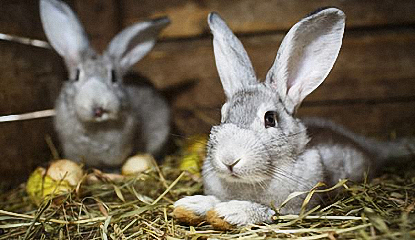Carcass traits and meat quality properties as affected by nutritional programs and feeding patterns in a rabbit enterprise
Keywords:
Nutrition, Carcass traits, Meat quality, RabbitsAbstract
This review looks at the effects of nutrition on carcass traits and meat quality properties in rabbits. Nutrition is a dominant integral part of a rabbit production enterprise that if appropriately modified will impart acceptable carcass and meat quality attributes sort in new demand market. This implies that feeding an appropriate diet to rabbits is the single most critical component in improving carcass traits and meat quality properties in a rabbit enterprise. Rabbits are instinctively unique in the sense that they have exhibited a relatively pronounced universal taste for common local feedstuffs composed to a greater extent of roughage and agricultural by-products. The utilization of dietary nutrient sources by rabbits is reliant on a variety of complementary determinants that include not only specific energy and protein sources but also intake and digestibility. The high pro health nutritional value and acceptable sensory attributes of rabbit meat have advanced its consumption in several countries and its gaining popularity. Today, when consumer demand for meat are inclined towards consumption of low fat, low calorie and positive healthy meats, new meat sources such as rabbits are increasing their share in the meat markets. Carcass traits and meat quality have shown to positively respond to different dietary nutritional levels and sources in rabbit production. Suitable nutrition regime would improve slaughter weight, hot and cold carcass weight, dressing percentage and the proportion of valuable giblets. Rabbit fed local unconventional feedstuffs can produce meat with similar or greater amounts of claimable polyunsaturated acids than feeding systems based on feedlot pellets alone. Dietary fats inclusion levels and their sources are important in expressing demanded carcass and meat quality properties, especially on influencing the type of fatty acid composition in meat. Feeding strategies through manipulation of dietary factors should endeavor at increasing the scope of unsaturated fatty acids, while decreasing the portion of objectionable saturated fatty acids promoting pro health value. Future rabbit nutritional research should shift from focusing on promoting quantity to enhancement of quality in response to the new demand market for healthy food in addition to promoting nutritional value and acceptable sensory properties. Heterogeneity in alternative energy and protein sources and their potential replacement value of alternative feedstuff in rabbits’ diets should be the targeted outcome from the nutritional research in rabbit meat production.

Downloads
Published
How to Cite
Issue
Section
License
Copyright (c) 2020 Never Assan

This work is licensed under a Creative Commons Attribution-NonCommercial-NoDerivatives 4.0 International License.



